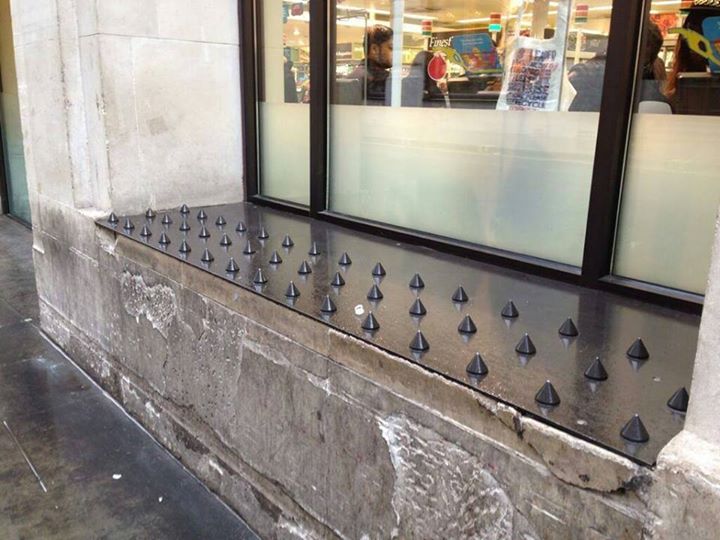I spend so much time thinking about attracting people to the things I design that I was taken aback by the concept of ‘hostile design’ when I first heard about it. Call me a zany optimist, but I always thought of public parks as pleasant places and bus benches as making modern life more convenient. Now I find out people actually design things in public spaces to DISCOURAGE the public from using them for too long or too comfortably.
In this 99% Invisible episode, Gordan Savičić and Selena Savić, co-editors of the book Unpleasant Design, point out the use of everything from sounds and lights (my favorite being housing estates in the UK that put up pink lighting, aimed to highlight teenage blemishes), to more overt physical measure such as metal spikes on benches, to keep the undesirables away. The problem with this approach is that it addresses the symptoms of the problem (like homeless people sleeping on bus benches) rather than the deeper causes of the problem. Unpleasant designs for public spaces are essentially shuffling people off to bother somebody else.
The other problem with hostile design is that metal spikes can’t make a judgement call when somebody needs help. According to 99% Invisible: “The reason we need a critical theory of unpleasant design is so we can recognize the coercion that is taking place in our public spaces. We need to know when we are replacing human interaction, nuance and empathy with hard, physical and non-negotiable solutions.”
For my part, I think we have enough hostility in our public environment already. What we need is a welcoming, inclusive public architecture, not a bench that gives us the brush off!



